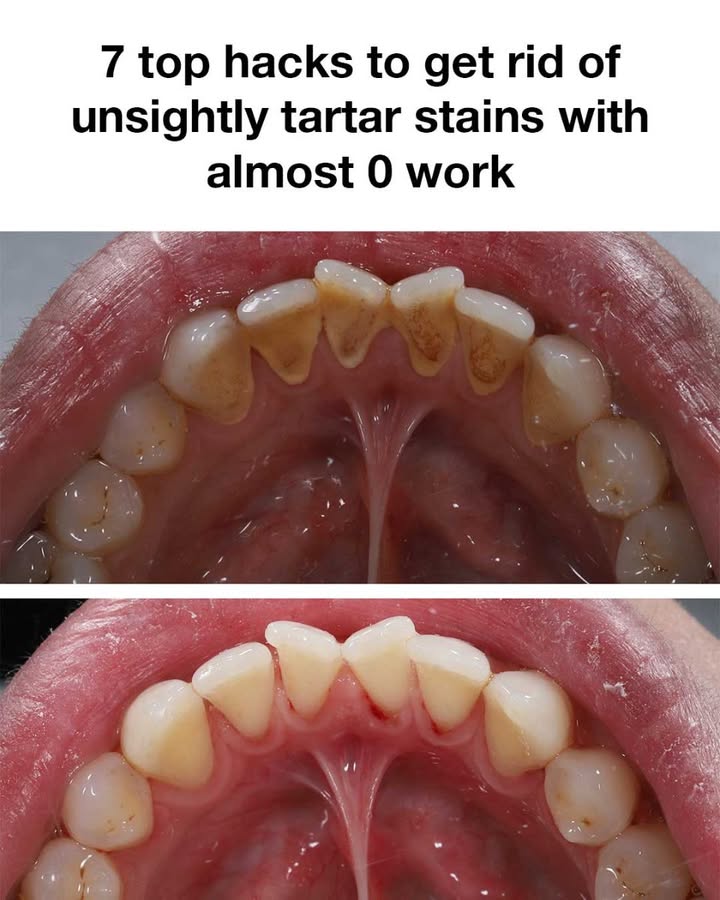Tartar, or dental calculus, is a hardened version of plaque that forms on your teeth and below the gumline when plaque isn’t regularly removed through brushing and flossing. Plaque itself is a sticky film made up of bacteria, and when it stays on your teeth too long, minerals from your saliva cause it to harden into tartar.

This buildup not only creates visible yellow or brown stains that can dull your smile, but it also contributes to cavities and gum disease. What makes tartar especially problematic is that its rough surface gives new plaque an easier place to cling to, which creates a cycle of continued buildup and greater oral health problems. That’s why consistent oral hygiene is vital. Brushing your teeth twice a day, flossing daily, and rinsing with antibacterial mouthwash are essential habits to keep plaque under control before it turns into tartar. Dental visits are just as important because only professionals can remove tartar once it’s formed. But while daily care is the best defense, there are also several low-effort home hacks that can help reduce plaque buildup, whiten your teeth, and support your overall oral health.
One easy and effective method is brushing with a paste made from baking soda and hydrogen peroxide. Baking soda works as a gentle abrasive to lift stains and scrub away plaque, while hydrogen peroxide has powerful antibacterial properties. To try this, just mix two tablespoons of baking soda with one tablespoon of hydrogen peroxide, brush your teeth for two minutes, and rinse thoroughly. This hack can help brighten your smile and reduce tartar without requiring a lot of time or money. Another simple trick involves apple cider vinegar, which is known for its natural antibacterial qualities. Mix it with water in equal parts and swish it around your mouth for about a minute, then rinse with plain water. While the vinegar can help loosen plaque, it’s important not to overuse it due to its acidity, which could damage your enamel over time if not rinsed properly.
A third method rooted in ancient wellness is oil pulling with coconut oil. This involves taking a tablespoon of coconut oil and swishing it around in your mouth for 15 to 20 minutes. Coconut oil has antimicrobial properties that can help reduce bacteria, and many people find this method leaves their mouths feeling cleaner and their breath fresher. Once you’re done, spit out the oil and rinse your mouth with warm water. Another unexpected but effective option is using orange peels. The inside of an orange peel contains limonene and vitamin C, which are believed to help break down plaque naturally. You can rub the inside of the peel directly onto your teeth for a couple of minutes or grind it into a paste to brush with. Over time, this citrusy remedy may brighten your teeth and reduce buildup.
Activated charcoal is also a popular natural remedy for whitening teeth and pulling surface stains. The porous structure of activated charcoal helps absorb bacteria and plaque. Wet your toothbrush, dip it into powdered charcoal, and brush gently for about two minutes, then rinse thoroughly. This method can be effective, but use it cautiously, as excessive scrubbing with charcoal can wear down enamel. Aloe vera gel is another gentle but effective natural option. Thanks to its anti-inflammatory and antibacterial qualities, it can help soothe gums while targeting bacteria that contribute to plaque and tartar. Mix a teaspoon of aloe vera gel with a pinch of baking soda and a few drops of lemon essential oil, brush for two minutes, and rinse. This mix supports both your teeth and gum health. Lastly, drinking green tea regularly offers a preventative benefit. Green tea contains catechins—powerful antioxidants that reduce inflammation and limit the growth of bacteria in the mouth. Making green tea a part of your daily routine can help keep plaque at bay, support gum health, and even freshen your breath without any added effort. While these hacks can aid in reducing tartar buildup and improving the look of your teeth, they should always be used alongside a solid dental hygiene routine. Regular brushing, flossing, using mouthwash, and seeing your dentist for professional cleanings are non-negotiable steps for keeping your mouth healthy. By adding these easy habits into your day-to-day life, you can maintain a brighter smile and better oral health with surprisingly little extra work.





